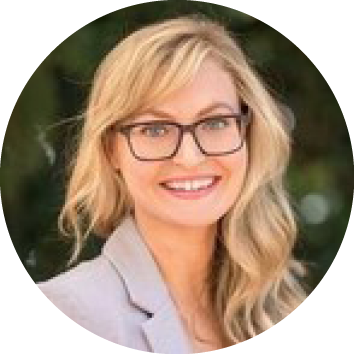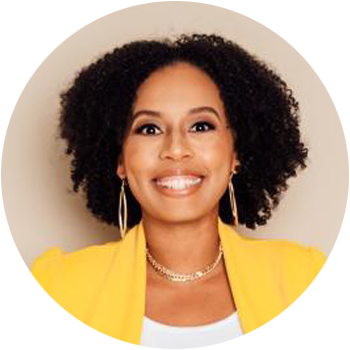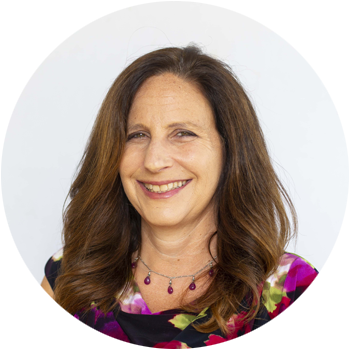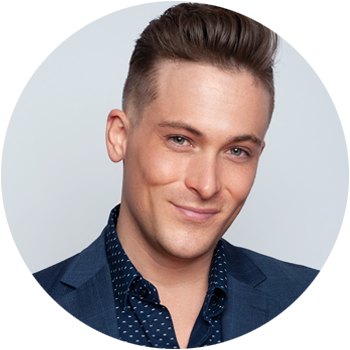Featured Article
Article Title
Sexuality Training in Counseling Psychology: A Mixed-Methods Study of Student Perspectives
Authors
Dena M. Abbott; Department of Educational Psychology, University of Nebraska–Lincoln
Jacob E. Vargas; Department of Educational Psychology, University of Nebraska–Lincoln
Hali J. Santiago; Department of Educational Psychology, University of Nebraska–Lincoln
Abstract
Counseling psychologists are a cogent fit to lead the movement toward a sex-positive professional psychology (Burnes et al., 2017a). Though centralizing training in human sexuality (HS; Mollen & Abbott, 2021) and sexual and reproductive health (Grzanka & Frantell, 2017) is congruent with counseling psychologists’ values, training programs rarely require or integrate comprehensive sexuality training for their students (Mollen et al., 2020). We employed a critical mixed-methods design in the interest of centering the missing voices of doctoral-level graduate students in counseling psychology in the discussion of the importance of human sexuality competence for counseling psychologists. Using focus groups to ascertain students’ perspectives on their human sexuality training (HST) in counseling psychology, responses yielded five themes: (a) HST is integral to counseling psychology training, (b) few opportunities to gain human sexuality competence, (c) inconsistent training and self-directed learning, (d) varying levels of human sexuality comfort and competence, and (e) desire for integration of HST. Survey responses suggested students were trained on the vast majority of human sexuality topics at low levels, consistent with prior studies surveying training directors in counseling psychology and at internship training sites (Abbott et al., 2021; Mollen et al., 2020). Taken together, results suggested students see HST as aligned with the social justice emphasis in counseling psychology but found their current training was inconsistent, incidental rather than intentional, and lacked depth. Recommendations, contextualized within counseling psychology values, are offered to increase opportunities for and strengthen HST in counseling psychology training programs.
Keywords
Human sexuality; counseling psychology training; sex positivity
Summary of Research
“Human sexuality (HS) is an integral component of wellness; yet, psychologists and trainees report feeling uncomfortable with and underprepared for addressing sexuality topics in their various roles. Counseling psychologists’ strengths-based, holistic, and multiculturally focused training and values make them particularly well-suited to address sex and sexuality in clinical practice, serve as sexuality educators, and advocate for sexual rights. Despite calls from within the discipline to centralize training in human sexuality, broadly, and sexual and reproductive health (SRH), specifically, training programs for counseling psychologists rarely require or integrate comprehensive sexuality education and cover most sexuality-related topics at low levels, if at all” (p. 52).
“Gender identity and sexual orientation, relationships and intimacy, sexual trauma, and sexuality related to lifespan development are covered in some form by a majority of programs, but topics including reproduction, diverse sexual interests and expressions, sex research, and sexual ethics were included in curriculums at very low rates. A similar pattern of results was found among predoctoral internship training programs. Therefore, it is possible the paucity of HST in counseling psychology programs may lead to deficiencies in clinical work, teaching, research, and advocacy, which impedes the public usefulness of the field” (p. 54).
The study employed convergent mixed-methods incorporating both qualitative and quantitative data collection methods. Participants were doctoral students in counseling psychology programs, recruited via listservs targeting members of the American Psychological Association’s Society for Counseling Psychology (SCP) and Division 44. The sample demographics revealed that the most common sexual and/or romantic attraction group was straight (47.4%), the most common race or ethnicity was White (61.8%), and the majority were cisgender women (78.9%). Focus groups were conducted to gather qualitative data, where participants discussed their experiences and perspectives on the human sexuality training they received, emphasizing the quality, comprehensiveness, and perceived gaps in their education.
The “study revealed that counseling psychology students in APA-accredited doctoral programs received limited HST. The HST they received often occurred in non-sexuality-focused courses or experiences, many of which they sought out or crafted themselves. Students in this study identified HST as congruent with the values and training of counseling psychologists and frequently relevant to their clinical practice. Thus, they desired more intentional and accessible HST, faculty and supervisors with sexuality competence, and program commitment to HST” (p. 62).
“In general, rates of training in each domain in this study are roughly comparable to other studies with the highest rates of coverage for topics related to sexual orientation and gender identity and lowest rates in topics related to sexual expression. However, as students were given a wider range of options in which they could endorse training (e.g., in research experiences, outside of the program), their responses may reflect a higher paucity of HST in counseling psychology training programs than was indicated by training directors (p. 62)”.
“Students in our study noted that intersectionality as a lens to conceptualize clients and the world was an expectation of counseling psychologists-in-training, but was not reflected in the minimal HST they received, and was challenging to implement in some cases given the absence of human sexuality knowledge (p. 62)”.
“Students also expressed discomfort discussing human sexuality in their clinical practice and identified their lack of training as the source of that discomfort. Some participants had received training or had personal experience with a particular aspect of human sexuality that increased their self-perceived clinical competence, suggesting … that sexuality-specific training and knowledge increases practitioners’ comfort and self-efficacy” (p. 63).
Translating Research into Practice
“Ideally, given the importance students placed on HST in this study and the central role of sexualities and reproduction in people’s lives, we support the inclusion of a required human sexuality course for developing counseling psychologists. Students in the present study offered a number of other recommendations to programs for improvement of HST including offering an elective and/or integrating sexuality-related topics across the curriculum. In final focus groups, students emphasized the opportunity for interdisciplinary collaboration. In the absence of experts within the program faculty, programs may be able to connect with other programs or departments (e.g., marriage and family therapy, women and gender studies) that already offer coursework in sexuality or have sexuality experts on staff” (p. 63).
“Other strategies to improve HST in counseling psychology training programs include providing sexuality-related continuing education to faculty to include in their coursework, teaching, and supervision, and building relationships with community partners who specialize in SRH as potential sites for clinical and advocacy training. Additionally, providing funding opportunities to students for HST workshops or conferences may help mitigate barriers participants discussed around participating in HST outside of their program’s curriculum that requires fees. With the counseling psychology model training program and social justice values in mind, advocacy training and experience in HST for students can increase competency, awareness, and professional development” (p. 63)”
“Faculty in practice and department- and university-based mental health clinics can provide and model accessible services for people impacted by sexual and reproductive rights violations including support groups, no-cost consultations, and the generation of lists of local resources. In collaboration with our participants, we also recommend sexuality-related, regular bias awareness training for students and faculty. Though certification as a sexuality educator or therapist is not necessary or appropriate for everyone, the Sexual Attitudes Reassessment, one element of certification, is useful tool for examining one’s worldview related to sex, increasing comfort with sexuality, and promoting nonjudgment of sexual diversity. Faculty may also benefit from sexuality specific continuing education approved by the American Association of Sexuality Educators, Counselors, and Therapists (www.aasect.org) and provided by organizations like Institute for Sexual Education and Enlightenment (www.instituteforsexua lity.com). Although these trainings may include gender ands exual and romantic attraction as topics, such trainings should also extend beyond people with minoritized genders and sexual/ romantic attractions to include other sexuality-centric issues of social justice, such as barriers to reproductive health for people with uteruses, ethical/consensual non monogamies, and diversity in sexual expression” (p. 63- 64).
Other Interesting Tidbits for Researchers and Clinicians
“A limitation of our study is that about half (51%) of programs were represented in our data. Additionally, 27 survey respondents and five qualitative interviewees were within the first 2 years of their program. Therefore, they may be less familiar with the entire program curriculum than those later in their training. Students in earlier cohorts may also have less variety in experiences that may provide HST (e.g., practica, research). Similarly, as students infrequently received sexuality education in their training, and given the dearth of general sexuality education available in the United States and other parts of the world in which students may be socialized (Hall et al., 2016), students may not have captured all their possible needs with regard to HST simply due to low levels of overall exposure. Additionally, though the sample is likely somewhat representative of students in counseling psychology, among survey responses, the most common sexual and/or romantic attraction group was straight (47.4%) and the most common race or ethnicity was White (61.8%). The sample was also overwhelmingly comprised of cisgender women (78.9%). Qualitative participants closely mirrored these trends. Thus, the social locations of these students may have influenced the results by favoring the experiences and needs of the predominant voices” (p. 64).































